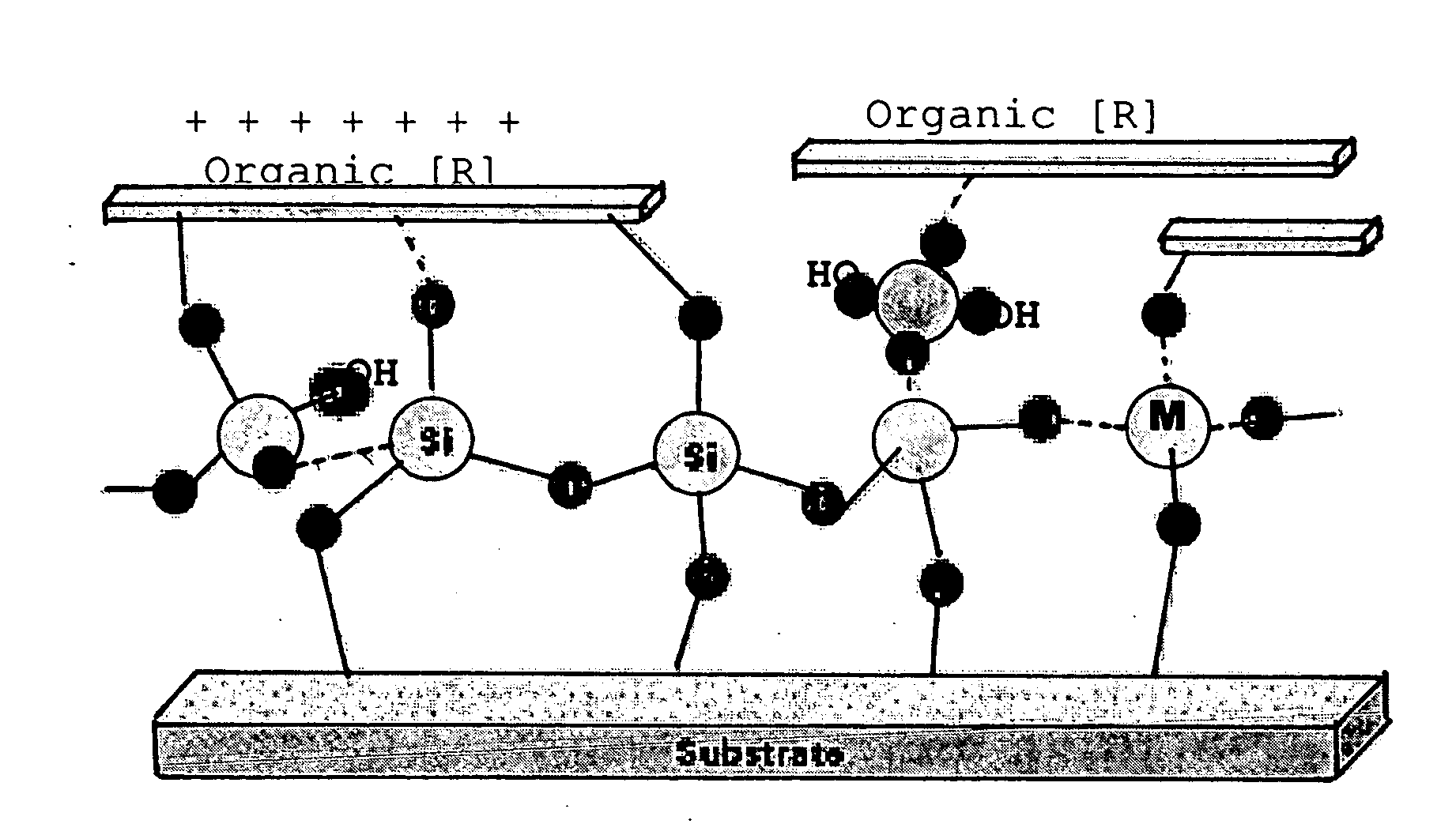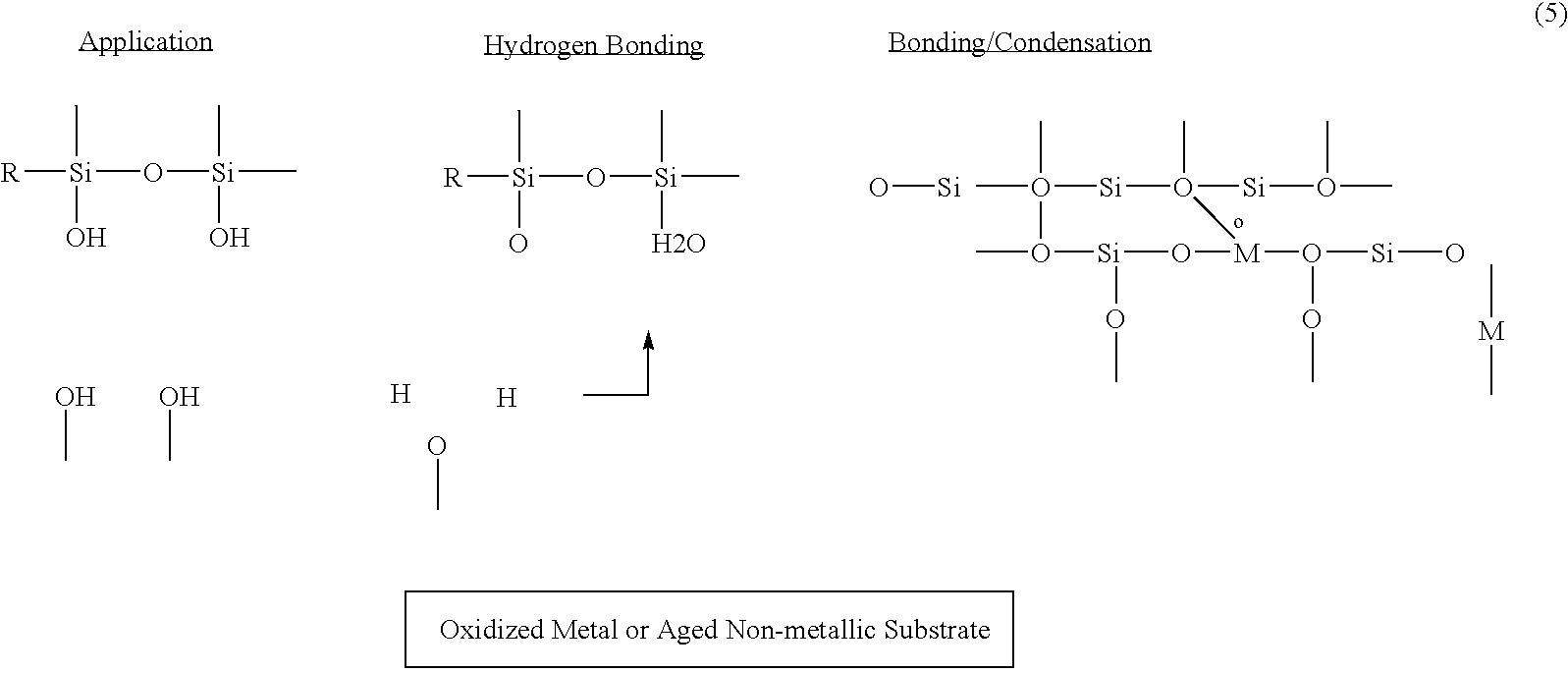Method of resisting contaminant build up and oxidation of vehicle surfaces and other surfaces
a technology of vehicle surface and oxidation, applied in the field of surface protection, can solve the problems of unusual phenomenon of electron deficient surface, and achieve the effect of promoting cleaning, promoting cleaning, and promoting cleaning
- Summary
- Abstract
- Description
- Claims
- Application Information
AI Technical Summary
Benefits of technology
Problems solved by technology
Method used
Image
Examples
example 1
Wheels
[0097] A catalyzed siloxane coating is wiped or sprayed on the car, truck, motorcycle, recreational vehicle, or other wheel with an applicator pad, or spray bottle, or other spray device. The tire is usually also done. The coating is sprayed on with a spray bottle and excess is wiped off both tire and drips or runs are lightly tagged off with a soft towel. The resulting coated wheel is easily cleaned with water without soap. The protected surface displays a contaminant-resistant, hydrophobic, and easy-clean character.
example 2
Wheels and Surface Finish of Automobiles
[0098] After cleaning the wheels and body and mild detergent and using an abrasive pad to remove brake dust and road grime from the alloy wheels, partially catalyzed 1-part reactive silanol is sprayed onto the wheels and car finish in areas approximately four square feet in area. After one to three minutes, the silanol is buffed into the surface with a dry cotton cloth. A mixture of 10 parts distilled water to one part white vinegar is applied to the treated surface with an atomizing hand spray bottle. The acidified water is mechanically buffed into the silanol until the water is removed and there are no streaks. These steps are repeated until the entire body, bumpers, light lenses, all wheels, and dashboard, door trim, and instrument panel are treated. The treated surfaces exhibited hydrophobicity, contamination resistance, and were easily cleaned by rainwater or by using tap water from a garden hose. This effect diminished over six months u...
example 3
Engines
[0100] Engines and all components under the hood of a vehicle, marine, aircraft, equipment, mobile or hydraulic equipment or heavy equipment; engines, engine rooms, or machine spaces on a boat or ship can coated to preserve the effects of heat, increase cleanliness, restore the finishes, and for ease of cleaning. The surfaces are washed to be free of organic contamination. Then, as with the wheels, the siloxane coating is sprayed on all surfaces including exhaust manifolds. Usually a siloxane containing simple organic groups is used so that the organic group leaves the surface at high temperature without toxicity, generally leaving a silicon-oxygen polymer (siloxane) stable at very high temperatures up to 1500 to 2000° F.
PUM
| Property | Measurement | Unit |
|---|---|---|
| molecular weight | aaaaa | aaaaa |
| area | aaaaa | aaaaa |
| reflectivity | aaaaa | aaaaa |
Abstract
Description
Claims
Application Information
 Login to View More
Login to View More - R&D
- Intellectual Property
- Life Sciences
- Materials
- Tech Scout
- Unparalleled Data Quality
- Higher Quality Content
- 60% Fewer Hallucinations
Browse by: Latest US Patents, China's latest patents, Technical Efficacy Thesaurus, Application Domain, Technology Topic, Popular Technical Reports.
© 2025 PatSnap. All rights reserved.Legal|Privacy policy|Modern Slavery Act Transparency Statement|Sitemap|About US| Contact US: help@patsnap.com



